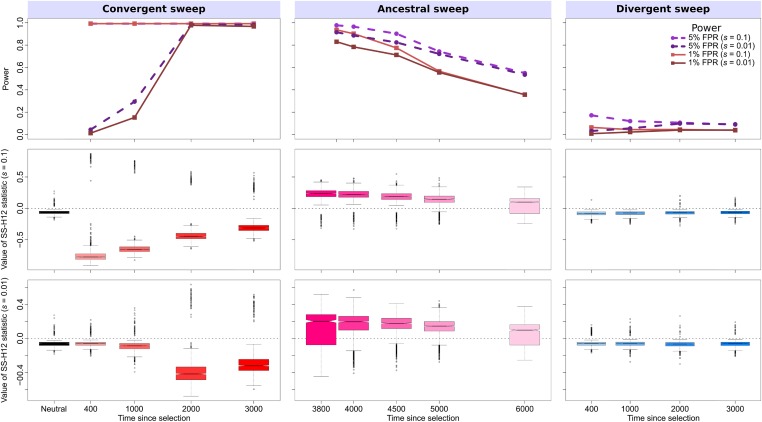Figure 3.
Properties of SS-H12 for simulated strong (; ) and moderate (; ) hard sweep scenarios under the CEU-YRI model ( generations, or 0.0935 coalescent units, before sampling). (Top row) Power at 1% (red lines) and 5% (purple lines) false positive rates (FPRs) to detect recent ancestral, convergent, and divergent hard sweeps (see Figure 1) as a function of time at which positive selection of the favored allele initiated (t), with FPR based on the distribution of maximum across simulated neutral replicates. (Middle row) Box plots summarizing the distribution of SS-H12 values from windows of maximum across strong sweep replicates, corresponding to each time point in the power curves, with dashed lines in each panel representing . (Bottom row) Box plots summarizing the distribution of SS-H12 values across moderate sweep replicates. For convergent and divergent sweeps, , while for ancestral sweeps, . All replicate samples for the CEU-YRI model contain 99 simulated CEU individuals and 108 simulated YRI individuals, as in the 1000 Genomes Project dataset (1000 Genomes Project Consortium et al. 2015), and we performed 1000 replicates for each scenario. YRI: Yoruba people from Ibadan, Nigeria.

